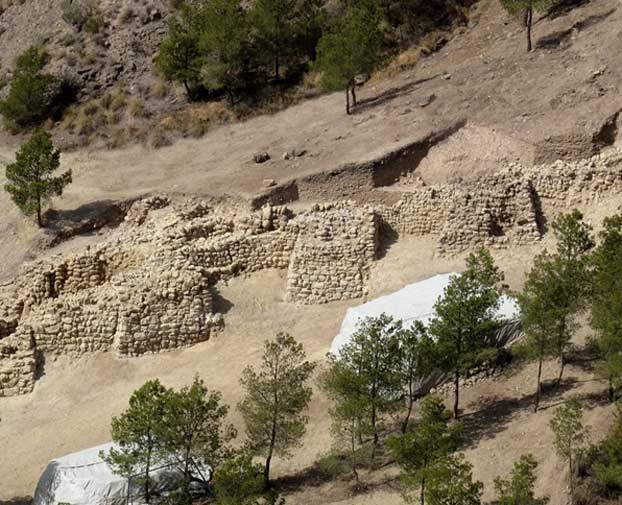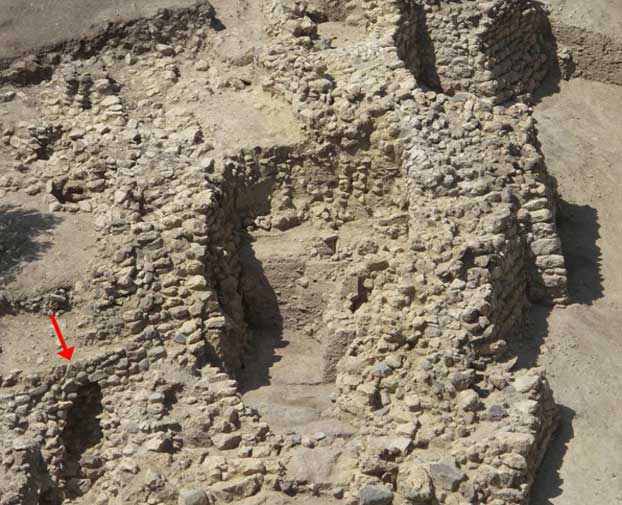
Ancient Fortress Found in Spain

Spanish archaeologists have discovered an impressive structure with 4,200-year-old outer walls and six pyramid-shaped towers, representing the most architecturally advanced Bronze Age fortress.
Called La Bastida, the Spanish fortification system stood in the sierras of Totana, in the southeastern Murcia region. It was built with large stones and lime mortar and consisted of 10-foot-thick walls that were once 22 feet high and imposing pyramid-based towers.
So far the archaeologists led by Vicente Lull, professor of prehistory of the Autonomous University of Barcelona, have unearthed six towers along a length of 230 feet, although the full perimeter of the fortification measured about 1,000 feet.
The entrance to the enclosure consisted of a passageway built with strong walls and large doors at the end, held shut with thick wooden beams.
PHOTOS: Bronze-Age Battle Frozen in Time
One of the most relevant elements of the discovery was the secondary door, located near the main entrance.
The door's arch is in very good conditions and is the first one to be found in prehistoric Europe.
Get the world’s most fascinating discoveries delivered straight to your inbox.
"Some of the fortification traits, such as the massive towers and the secondary door, could be found in some places of the Eastern Mediterranean slightly before 2200 B.C. This might show unexpected political relations between distant regions," Rafael Micó, professor of prehistory at the Autonomous University of Barcelona and a member of the "La Bastida Project" direction team, told Discovery News.
Protecting a city located on top of a hill and extending over 10 acres, the fortress was designed by people experienced in fighting methods unknown in the West at those times.
The model is typical of ancient Mediterranean civilizations, including the second city of Troy in Turkey, and the urban world of the Middle East (Palestine, Israel and Jordan). According to the archaeologists, people from the East participated in the construction of the fortification.
"It was not until some 400 to 800 years later that civilizations like the Hittites and Mycenaeans, or city-states such as Ugarit, incorporated the innovative methods seen at La Basida into their military architecture," the archaeologists said in a statement.
Indeed, the fortress contained unique military features. For example, the lime mortar offered exceptional solidity to the construction, strongly holding the stones and making the wall impermeable, as well as eliminating any elements attackers could hold on to.
The postern gate, as a hidden and covered entrance, demanded great planning of the defensive structure as a whole and of the correct engineering technique to fit it perfectly into the wall.
NEWS: Bronze Age Civilization Spotted in Old Photographs
All this indicates that La Bastida "was probably the most powerful city of Europe during the Bronze Age," the researchers said.
Previous excavations had already revealed the existence of a pool capable of storing over 100,000 gallons, and large houses and public buildings which were alternated with smaller constructions, all separated by entries, passageways and squares.
"Our findings show a military, political and social rupture: the establishment of a violent and classist ruling society, which lasted seven centuries and conditioned the development of other communities living in the Iberian Peninsula," Micó said.
La Bastida will be fully excavated with the aim of transforming it into an open archaeological park that will include a monographic museum and a research and documentation center.
This story was provided by Discovery News.
 Live Science Plus
Live Science Plus






